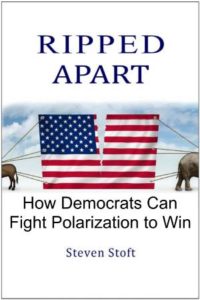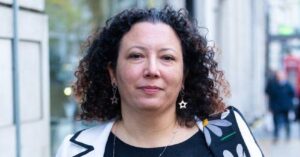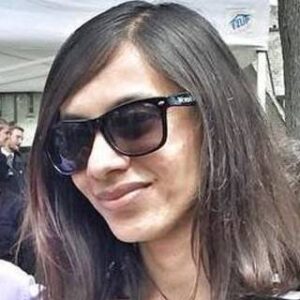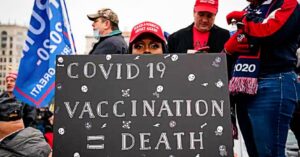1.4 How Polarization Develops
Polarizing people is a good way to win an election, and also a good way to wreck a country.
—Molly Ivins, political columnist
“Other side, nigger,” said the teenage wannabe Klansman, as he pointed to a door that said “COLORED.” The 19-year-old John Lewis was prepared. “I have a right,” he said calmly, “to go in there, on the grounds of the Supreme Court decision in the Boynton case.” “Shit on that,” came the reply, as the young tough smashed Lewis in the face. It took a few months, but Lewis and the other Freedom Riders, Black and White, won that fight for the Blacks—but really, for all of us.
Lewis was no coward; quite the opposite. Had the Freedom Riders been cowards, they would never have stepped onto those buses. They knew exactly what they were up against, and they had been well-trained and well-practiced in nonviolence. One of his teachers had studied under Mahatma Gandhi in India.
They won without increasing national polarization because of their extraordinary civility. But their bravery was every bit as important. Bravery commands respect. Aggression calls forth retaliation.
The civil rights movement may have been the greatest chapter in American political history, so I will touch on it several times. But here I will use it to show how forceful civility leads to progress rather than polarization, while incivility does the reverse.
The same dynamic that ended the civil rights movement and began polarizing us continues today and is escalating. But it is easier to learn from the past because we are less emotionally involved with it. First, it’s important to see what powerful, yet civil, grassroots protests look like because this has been so nearly forgotten that many simply cannot imagine it. Then we’ll see how radicalism can destroy the civil forces that brought success.
Freedom Riders: Civil but Powerful
The Supreme Court ruled in 1946 that segregation of interstate buses and their facilities was unconstitutional. But as late as 1961, the year Lewis boarded the bus, Southern interstate busing was still segregated. Less than four months after Kennedy took office, the first Freedom Riders left Washington, D.C., on a Greyhound bus and a Trailways bus with the intention of reaching New Orleans for a conference. There were only six or seven Freedom Riders per bus, about half Black and half White, and two of the Blacks did not sit in back as required by Jim Crow laws in the South.
The results shocked the nation.
The Greyhound bus was met by a mob organized by the Ku Klux Klan in a town not far from Birmingham, Alabama. In anticipation, the whole town came out to watch, but the police arrived 20 minutes late. Two Highway Patrolmen on the bus kept the mob out of the bus, but its windows were smashed and its tires slashed before the police escorted it out of town with the mob following.
When the bus, tires flat, stopped after a few miles to call for repairs, the mob firebombed it and held the doors closed. But something, possibly an explosion, caused them to back off. According to Janie McKinney, who was 12 at the time, “The door burst open, and there were people just spilling out of there. They were so sick by then [from smoke inhalation], they were crawling and puking and asking for water. They could hardly talk.” Although White and afraid for her life, but propelled by her Christian upbringing, she found a pail of water and a cup. The first person she helped was an elderly Black woman who was not a Freedom Rider. She gave her water, washed her face and then went on to help the others. Later she learned the Klan had met to decide if they should try her as an adult but decided against it.
The Trailways bus that left an hour later carried John Lewis and other Freedom Riders. They were not so lucky. John Lewis and a friend were beaten by Klan members as soon as the bus stopped in South Carolina. After that, the FBI, the Birmingham Police and the Klan worked in coordination. Birmingham’s Public Safety Director, Bull Connor, had assured the Klan they would have 15 minutes to “beat” the Freedom Riders “until they looked like a bulldog got ahold of them” before the police arrived. That’s what happened.
Due to more threatened violence, none of the Freedom Riders were able to make it past Birmingham on the buses and instead flew to the rally in New Orleans. Over the summer, more than 300 Freedom Riders were jailed, often for months, under atrocious conditions. Jailed for what? For breaking illegal Jim Crow laws. Attorney General Robert Kennedy had struck a deal with Mississippi’s Democratic Senator, James O. Eastland. Kennedy would not interfere in Mississippi’s affairs by sending in federal marshals as long as Eastland would guarantee there would be no mob violence.
Impact of the civil rights movement. On June 11, 1963, President John F. Kennedy gave his “Report to the American People on Civil Rights,” a speech delivered on radio and television in which he proposed legislation that would later become the Civil Rights Act of 1964.
Martin Luther King Jr. sent a telegram to Kennedy stating, “Your speech was one of the most eloquent, profound, and unequivocal pleas for justice and freedom of all men ever made by any President. You spoke passionately for moral issues.” This, and a lot of politicking by LBJ, led to the passage of the 1964 Civil Rights Act by an overwhelming majority in both houses of Congress, and then to the war on poverty and to legislation for Medicare, Medicaid, food stamps, VISTA and more.
Incivility Leads to Polarization
Black radicals. As early as 1963, in his famous “Letter from a Birmingham Jail,” King was feeling trapped between two forces. One was the force of complacency and the “other force is one of bitterness and hatred, and it comes perilously close to advocating violence.” He was pointing to the Nation of Islam (which would murder Malcolm X two years later). By 1966, Black radicals on the left were rejecting King’s nonviolent approach. Stokely Carmichael, the champion of the Black power movement, denounced integration, saying “integration was irrelevant when initiated by Blacks … this country has been feeding us a [deformity-causing] thalidomide drug of integration.” King’s popularity plummeted.
The Black Panthers, formed in 1966, declared that “power grows out of the barrel of a gun.” In 1968, the Panthers’ Minister of Information, Eldridge Cleaver, fled to Cuba after he led an ambush of Oakland police officers, which ended up wounding two officers as well as Cleaver himself and killing 17-year-old Panther Bobby Hutton. From that point, as described in Chapter 37, the Panthers slid into violence so shocking that knowledge of it has been largely suppressed by the left.
Urban Riots. The 1960s also saw a series of more than 100 urban riots that polarized the country, beginning with the six days of rioting in Watts. I am not saying the Watts riot was a root cause of polarization. The riot itself had causes. One was the passage of an amendment to the California Constitution re-legalizing the housing discrimination that kept Blacks in ghettos. It was passed soon after the Civil Rights Act by a two-thirds (!) majority of California’s voters. Police brutality was another cause, though it was not the triggering incident. Nonetheless, the Watts riots were highly polarizing.
White radicals. Bill Zimmerman, a 1960s radical writing in The New York Times in 2017, presents a sympathetic summary of “The Four Stages of the [Vietnam] Antiwar Movement.” In the first two stages, according to Zimmerman, the antiwar movement was almost entirely nonviolent and got its point across with “teach-ins” and marches. During this time, it had a huge positive impact on public opinion. Had members of the antiwar movement swallowed their pride and worked for Humphrey, there’s a good chance they could have elected him and pressured him into winding down the war—he was already moving that direction by the time of the election.
Zimmerman describes the third stage, which occurred after Nixon was elected, as follows:
Alienated and enraged, we moved on to the rejection of mainstream lifestyles, violent clashes with police and militant opposition to the government. Our strategy was to force an end to the war by creating instability, chaos, and disruption at home.
Loyalties shifted. Earlier, the dominant slogan had been, “Hey, hey, L.B.J., how many kids did you kill today?” In 1969 [a dominant slogan was] “One side’s right, one side’s wrong, victory to the Viet Cong.” … Rejecting the social order, many activists called themselves revolutionaries … often becoming trapped by arcane factional disputes … Students for a Democratic Society began their bombing campaign.
The Wrecking Crew. After Kennedy’s landmark Report on Civil Rights and Johnson’s passage of the Civil Rights Act in July 1964, Johnson received over 61% of the popular vote, the largest percentage the Democratic Party had received in its 190-year history. And the momentum continued for a year. But four years later, after Stokely Carmichael’s repeated trashing of Martin Luther King Jr., after a string of horrific urban riots, after the rise of the Black power movement and the Black Panthers, after the Weather Underground’s bombing war against “Amerika,” and after the antiwar movement turned anti-American, the Democrats lost to Richard Nixon.
While it’s true that racist Southern Whites switched parties because the Democratic establishment had backed civil rights, the civil rights movement did not increase emotional polarization, and it was essential. The actions of the radical left proved tremendously polarizing and destructive.
Conclusion
Both the civil rights movement and the anti-Vietnam-war movement forcefully and, in the beginning, civilly took on social problems of enormous importance. Both gained huge followings. The power and breadth of these movements attracted radicals who saw themselves as heroic visionaries. As so often happens, these pseudo-revolutionaries pushed these movements to extremes and destroyed them.
The same thing may be happening to the Democrats today.
Civil grass-roots politics, whether in the form of direct action or electoral organizing, is generally effective and minimally polarizing. Incivility polarizes society and strengthens intolerance and anti-democratic forces, even when it wins short-term victories. Most often though, its victories are only against those who, like Martin Luther King Jr., are most effective.
- Offensive radical action and incivility contribute to the enduring culture war that unifies and strengthens Trump’s base.

 Ripped Apart
Ripped Apart

